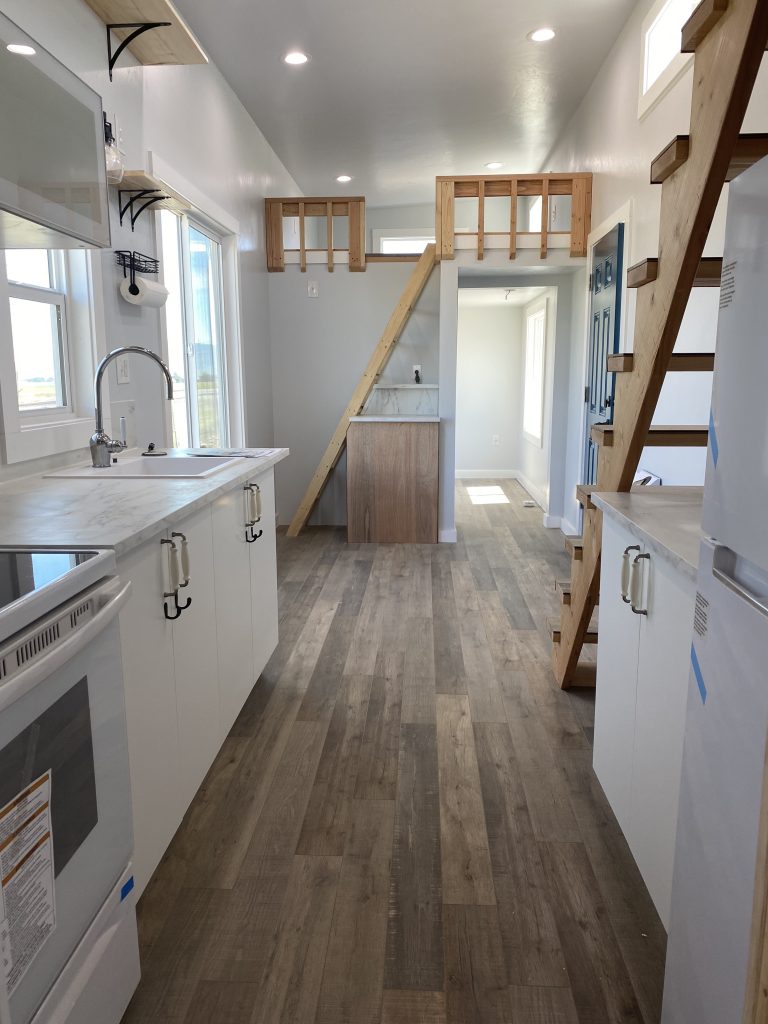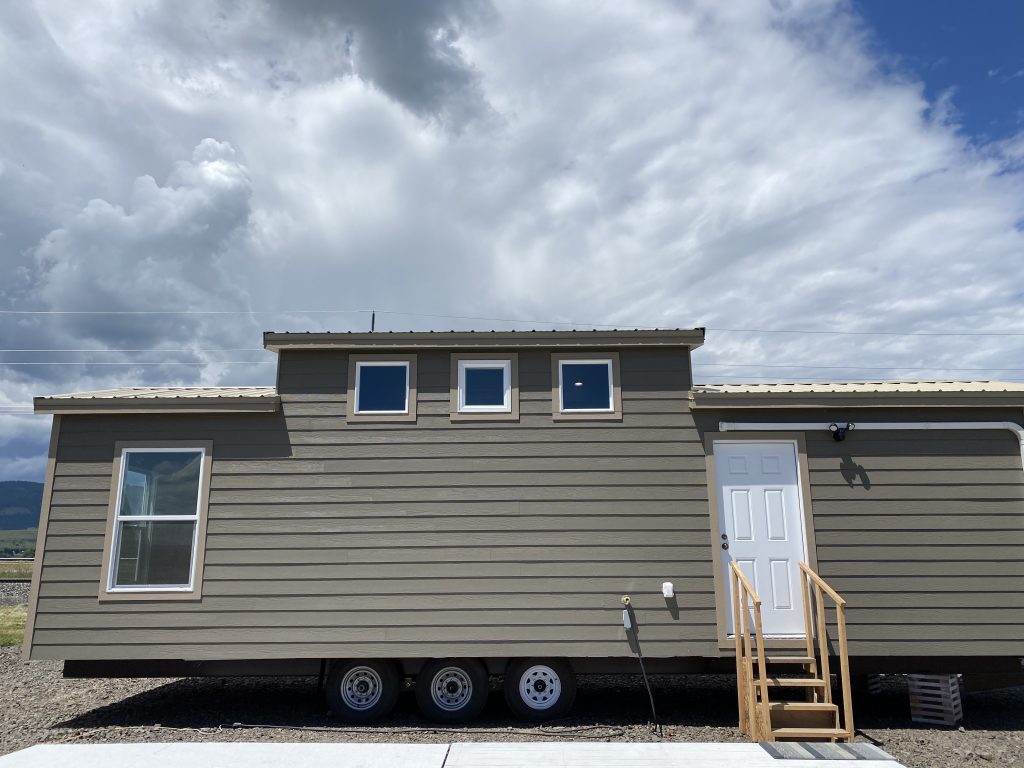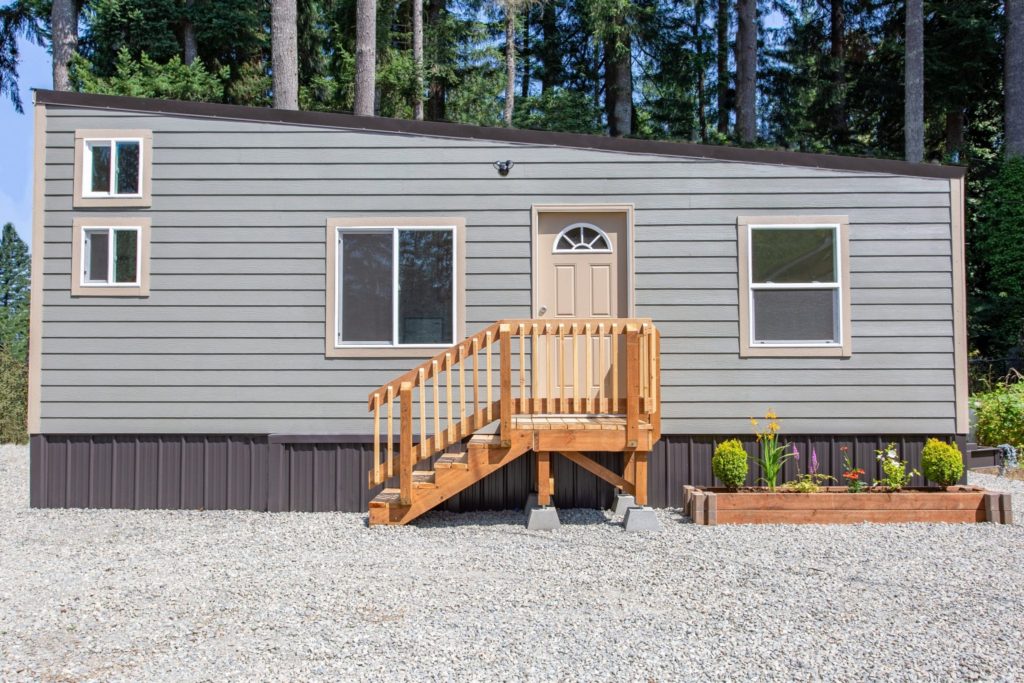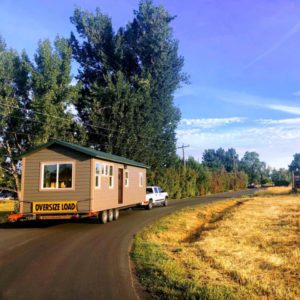The Shelter Continuity Project
Portland Oregon-The Shelter Continuity Project is including tiny houses on wheels, shelters, group living, outreach and engagement, and outdated codes and regulations as a means to address the increasing homeless crisis. Among the goals are to create more safe shelters and a variety of options for affordable housing.
FAQ
S2HC Frequently Asked Questions (FAQs)
The Shelter to Housing Continuum (S2HC) project addresses the urgent need to provide more options for those who are homeless – or could potentially experience homelessness – and facilitates transitions to permanent housing for housing-vulnerable Portlanders.
On this page
The proposed amendments to the City code would allow needed emergency shelters, day storage, and hygiene facilities, transitional living facilities, and stable housing for individuals and households with extremely low incomes. It would also improve how the regulatory environment affects for-profit, nonprofit, and public sector shelter and housing providers.
The proposals fall into four categories:
- Traditional sheltering and temporary facilities
- Outdoor shelters and day facilities
- Housing flexibility through group living
- Limited occupancy of a recreational vehicle or a tiny house on wheels on residential property.
These FAQs address important topics about the project and the overall proposal.
General
What is this project about?
The project changes a variety of City codes to help partner agencies (the City-County Joint Office of Homeless Services, Housing Bureau, Bureau of Development Services) and nonprofits (e.g., Central City Concern) provide safe and decent shelter and more affordable housing for those in need during this crisis of homelessness.
Why is this project happening so fast?
- BPS was directed by City Council on Feb. 19, 2019, to undertake this work through Ordinance No. 189387, which extended the City’s State of Housing Emergency to April 4, 2021.
- This project changes City codes to provide most of the same opportunities that the Housing Emergency provided – but on a more permanent basis.
- The COVID-19 pandemic is expected to worsen Portland’s homeless crisis, should more people lose their jobs or rent and mortgage payment moratoria and unemployment benefits expire. Changing the code now allows the City to get in front of this potential increase.
- People who are homeless, living on the streets in tents or vehicles, are suffering. This project makes it easier for the City and shelter providers to replace informal encampments with sanctioned shelters that have onsite services, such as hygiene facilities, garbage collection, and, in some cases, wraparound medical, disability, and social services that help people get ready to rent.
What is the difference between “shelter” and “housing”?
Shelter is a community service provided by government agencies or nonprofit corporations to help people experiencing homelessness. A “host” provides shelter and services to a “guest” or “client,” who is supported as they transition to housing.
Housing is residency established under a landlord-to-tenant relationship or by ownership. The zoning code categorizes housing as residential use and shelters as a community service use.
What is considered a “dwelling unit”?
A dwelling unit is a building or a portion of a building that has independent living facilities, including provisions for sleeping, cooking, and sanitation (a bedroom, kitchen, and bathroom).
What are “allowed uses” and “conditional uses”?
The zoning code categorizes land uses as allowed, conditional, and prohibited. Allowed means a permit can be issued for the use without any public process or hearing. Conditional means that there must be public notice and an opportunity for a hearing. Prohibited means a permit cannot be issued.
Why does the project eliminate the regulation about the number of people allowed to live in a dwelling unit?
- The current definition of Household is outdated and does not reflect the range of living arrangements today.
- This definition is also unenforceable because, in some cases, it relies on proving a blood relationship between household members.
- Other City codes already have limits on the number of people in a building, based on bedrooms and square feet. It is not necessary to also regulate the number of occupants in the zoning code.
How does this project relate to the City’s inclusionary housing rules that require a percentage of affordable units in new apartments and condominiums?
Inclusionary housing (IH) requirements require a percentage of affordable units in new development with more than 19 units. While adjusting group living housing regulations, the project was careful to neither expand nor contract IH requirements. Inclusionary housing requirements do not apply to shelters.
Will shelters be allowed in parks and open space zones? Why or why not?
The current proposal does not allow for shelters to be permanently located in open space zones. This is because:
- Open space (OS) zones often include environmental resources that should not be disturbed.
- Parks and open space have often been purchased with bond money limited to specific purposes or were given to the City with deed restrictions, often stipulating they must be used for parks, recreation or open space purposes, which doesn’t include housing, shelters or other types of development.
- The proposal would, however, allow the temporary siting of shelters in parks and open space for no more than 180 day.
Shelters
The proposed regulations:
- Expand where shelters are allowed without conditional use.
- Increase allowed number of shelter beds in the CM2 (commercial/mixed-use) and CI2 (campus/institutional) zones.
- Clarify that clients may stay longer than 30 days in short-term shelters.
- Add a new path for permitting outdoor village-style shelters so they do not have to be authorized one at a time by Council code waivers.
- Facilitate more rapid opening of seasonal or weather-related temporary facilities.
- Allow day storage and hygiene facilities.
- Allow institutions (such as churches and schools) to provide meal programs, shelter and related services.
What are the three shelter types and how do they differ?
No single shelter type or shelter model can solve this crisis alone. These different types of facilities serve different types of clients.
- Outdoor shelters (new to the Zoning Code with this proposal) are organized groups of tents or other accommodations that do not qualify as buildings. Supporting hygiene, storage and kitchen facilities could be in accompanying buildings. Shelters would be operated by a public agency or a nonprofit. The state of emergency helped us develop alternative outdoor shelter models like the Kenton Women’s Village and the upcoming St. Johns Village. These village-style shelters appeal to people who are more comfortable with smaller and more intimate settings. These communities empower participants to help and care for one another.
- Mass shelters are in buildings but do not provide individual bedrooms. Examples: Laurelwood Center, Harbor of Hope, Willamette Center and Bybee Lakes Hope Center.
- Short-term shelters provide individual bedrooms. Bathrooms or kitchens may be shared or private. Examples: Multnomah County Behavioral Resources Center.
Where will these new outdoor shelters be allowed?
- Smaller shelters would be allowed by right in commercial, multi-dwelling, and employment zones.
- Larger shelters could be permitted as conditional uses.
- There would be a limited allowance with a conditional use review in industrial zones.
- Shelters could also be allowed temporarily or seasonally anywhere – with permission of the landowner – but for no more than 180 days.
- The City also retains flexibility to site temporary shelters anywhere without a conditional use for longer periods of time in response to disasters, such as the COVID-19 emergency or in the aftermath of an earthquake.
Will this project allow people to continue to camp in parks and on sidewalks and along streets?
No. Informal camping remains prohibited, but this prohibition has not been strictly enforced during the COVID-19 emergency. It is unkind to direct campers to leave parks, sidewalks and roadsides unless there is another place they can safely shelter. This project provides more sanctioned alternatives to informal camping.
Why not allow any vacant lot or empty building to be used for shelter?
Many vacant lots and buildings will qualify as shelter sites. But sheltering on any site requires the permission of the landowner, including public landowners like the City of Portland.
Many schools are empty and could provide shelter space; have you considered using those spaces?
Schools are expected to open again in 2021, and this project is about longer-term allowances for shelters. On a temporary basis, vacant school buildings could be used for shelters for up to 180 days, with permission of the school board.
Instead of increasing allowances for shelters, why doesn’t the City build more affordable housing?
The City is doing both. Shelter is a “front door” to services that help transition people to housing. This continuum strategy allows more options for the City to meet people experiencing homelessness or housing insecurity where they are and begin a transition to stable housing. In the meantime, City and Metro bond money is being used to build more affordable housing.
Group living
The proposed regulations:
- Provide parity between household and group living by allowing group living arrangements by right in the same places that household living is allowed by right.
- Remove code complexity and barriers to the production or retention of group living arrangements.
- Simplify definitions to clarify difference between housing and shelter, group living and household living.
- Eliminate the definition of “household” but continue to regulate residential use as either household living or group living.
What is group living and how is it different from houses or apartments that are rented?
- Most resident uses are classified as household living.
- Group living includes single room occupancy buildings, dorms, retirement care facilities or co-housing complexes where a larger group of residents share kitchens or bathrooms.
- The proposal allows group living by right in residential zones in parity with household living, without a conditional use.
- This increases the range of housing types that can be built. Group living buildings can be more affordable than traditional houses or apartments because kitchens are often the most expensive rooms to build.
What is the difference between group living and single room occupancy living?
The proposed code no longer employs the term “single room occupancy” – or SRO – because it is just a subset or form of group living. Group living is also allowed in buildings that function as apartment buildings, but residents have their own bedrooms and may share bathrooms or kitchens.
Why is there a cap of 3,500 square feet of floor area that applies only to group living?
The cap is a backstop to ensure group living facilities will be similar in size to allowed household living structures on large lots. This cap will not apply to existing buildings, and its application is limited to new group living facilities on oversized, single dwelling, residential lots. It will not apply to normal sized lots or to group living in multi-dwelling residential, mixed use, or employment zones. Aside from this cap, all size, height, coverage, and bulk regulations for group and household living are exactly the same. This cap is not applied to household living uses because the scale of household living is limited in other ways by density regulations and the number of bedrooms.

Recreational vehicles and tiny houses on wheels
What are recreational vehicles and tiny houses on wheels?
They are vehicles, not buildings. The term is used to refer to campers, motor homes, vacation trailers and fifth-wheel trailers. Tiny homes on wheels and park model recreational vehicles are also included. These are small homes built on a trailer, using a campsite style hook up for water, electricity and sewer. Vehicles are regulated by the Oregon Department of Transportation’s Motor Vehicles Division and are not subject to state and city building codes. The current City code prohibits residential occupancy of vehicles, but enforcement of this prohibition is de-emphasized pending a decision on whether to loosen the prohibition.
Where will recreational vehicles and tiny houses on wheels be allowed?
One recreational vehicle or tiny house on wheels will be allowed on a residential lot as a replacement of an allowed accessory dwelling unit, provided it meets certain industry construction standards. This allowance:
- Acknowledges that many people already live in recreational vehicles or a tiny house.
- Provides a lower cost option for people who might not be able to afford to rent an accessory dwelling unit, apartment, or house.
Recreational vehicles and tiny houses on wheels would also be allowed in outdoor shelters, church parking lots, manufactured home parks, and commercial campgrounds.
Why only one recreational vehicle or tiny house on wheels per residential lot?
- Under state law, two or more on any one lot is considered a campground, requiring a state license.
- In Portland, campgrounds or recreational vehicle parks are already allowed in commercial zones.
This one per lot limit does not apply to recreational vehicles and tiny houses on wheels in manufactured home parks.
How will utilities be provided to RVs and tiny houses on wheels?
The proposed code requires that a campground-style utility hookup be installed, with a plug for electricity and connections to City water and sewer.

Other Codes
What City codes other than the Portland Zoning Code are addressed in this project?
- An obsolete chapter of Title 8 of the City code that used to regulate travel trailer courts is repealed because those regulations have been superseded by more current City codes or are pre-empted by state law.
- Two chapters of Title 15 concerning emergency powers are amended to recognize that the city’s shortage of shelter and affordable housing is a continuing – not an episodic – emergency caused by a natural disaster.
- One chapter of Title 17 amends right-of-way regulations to allow mobile support facilities (e.g., mobile showers) adjoining shelters.
- One chapter of Title 29 amends property management regulations to allow permanent residency in a single recreational vehicle or a tiny house on wheels on residential lots and allow accommodations that do not qualify as buildings in outdoor shelters.
Outreach and engagement
Who are the project partner agencies?
- Bureau of Development Services
- Joint Office of Homeless Services
- Office of Management and Finance
- Portland Bureau of Transportation
- Portland Fire and Rescue
- Police Bureau
- City Attorney’s Office
- Mayor Wheeler’s Office
- Commissioner Fritz’s Office
- Commissioner Ryan’s Office
- Commissioner Hardesty’s Office
How was the public engaged before public hearings began?
- Community engagement for S2HC was guided by input from the Community Involvement Committee and the work of a consultant (Angelo Planning).
- Project staff presented the S2HC proposals through video conferencing during a dozen virtual community meetings from May to November, which included people with experience being homeless or living in homeless shelters. More than 90 community members participated.
- Members of a standing inter-agency Housing Continuum Committee participated in these community meetings, answering questions and providing assistance.
- A technical advisory committee drafted the proposals and also participated in community meetings.
- Thirty-one comments were received in response to the Discussion Draft in October. These comments were considered while formulating the Proposed Draft.
How do the changes in the proposed draft of the regulations respond to comments made on the earlier draft?
The Proposed Draft incorporates comments by:
- Increasing the places where shelters are allowed under easier approval procedures.
- Increasing the number of beds and accommodations allowed in some shelters.
- Allowing permanent residential occupancy of recreational vehicles and tiny houses on wheels in some places.
- Providing maps and charts explaining the different shelter allowances.
- Adding numerous technical adjustments.
- Adding a second Planning and Sustainability Commission hearing (on December 15).
The Proposed Draft does not incorporate comments requesting:
- Even greater increases in the number of allowed shelter beds and accommodations.
- Allowing shelters as a permanent use of Open Space after the housing and COVID-19 emergencies expire.
- Allowing permanent residential occupancy of more than one recreational vehicle or tiny house on wheels on a residential lot.
- Stopping or slowing down the project.
Contact
Al Burns
Project Manager
Janet Thome Founder And President Tiny House Alliance USA
Tiny House Consultant Tiny Portable Cedar Cabins
Contact Me at 509 345 2013
Cell 509 770 1694
janet@tinyportablecedarcabins


